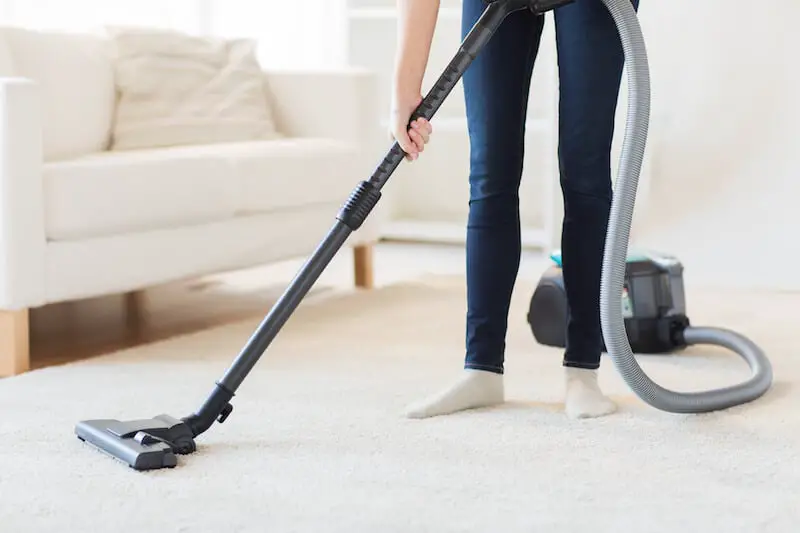What is
a canister vacuum?
If you're looking for a new vacuum cleaner, you'll want to know your options– and the type of the vacuum is the best place to start.
Before going into the details like attachments and suction power, you first need to decide which type of vacuum you need.
Upright vacuums and canister vacuums are the two choices you have if you're looking for a strong and efficient vacuum cleaner with the cleaning power to keep even the most challenging surfaces like high-pile carpets thoroughly clean.
While upright vacuums are the more popular choice, canister vacuums have their fans as well.
But what is a canister vacuum? Let's have a look.
The configuration
A canister vacuum was named after its appearance. This type of vacuum used to have a cylindrical main body, which stood on wheels. Although nowadays these vacuums come in many modern shapes and forms, a canister vacuum still refers to a machine with a main unit that has a stretch hose and wand attached.
Main body
The main body of a canister vacuum is what holds the motor, filtration system, and dirt cup. The motor creates the airflow, which is then guided through a hose and wand to the cleaning head.
This type of vacuum is easy to use and lightweight because the main body rests on the floor while only the wand and cleaning head are used for vacuuming. The vacuum usually has 3-4 wheels, which makes it easy to maneuver between furniture. When moving from one area to another, you simply pull the hose to move the vacuum. It also has a handle for portability.
The body of the vacuum holds the motor. Canister vacuums are almost always corded and, more often than not, bagged vacuums with a changeable dust bag inside. However, new models with a bagless design are entering the market, making them more environmentally friendly and cheaper to maintain.
Because the motor itself does not have to be pushed and pulled across the floor like in the traditional upright vacuum, canister vacuums can be more powerful and have a stronger motor with better suction.

Wand and hose
In a canister vacuum, the cleaning head is linked to the motor with a stretchable hose and a wand. The hose makes it easy to maneuver the cleaning head on all surfaces from the floor to the ceiling.
With the wand attached, you won't have to bend down for vacuuming the floor, and you can reach areas up high as well. The wand is usually extendable so that you can find the right length for your height.
To make the vacuum more ergonomic, most brands have added a comfortable handle with fingertip controls or foot pedals you can use to control the vacuum.
The attachments
Canister vacuums often come with several attachments because the design of the vacuum allows it to be used in many different areas, and a variety of tools for different surfaces enables you to get the most out of the machine.
You usually get at least three attachments you can attach on– either using the wand and hose or leaving the rod out of the equation. A crevice tool, dusting brush, and upholstery tool are usually included with canister vacuums. This set of attachments allows you to clean most surfaces of your home efficiently.
In addition, better-equipped canister vacuums may come with attachments such as a motorized brush roll tool for deep cleaning upholstery and stairs, or a separate cleaning head for different floor types.
Some vacuums have a floor cleaning head with a brush roll, which can be turned on and off, while other vacuums come with separate heads for different types of surfaces.
The areas of use
Canister vacuums are very versatile and can adapt to various surfaces and areas.
Floors and carpets
The cleaning heads, combined with powerful suction, offer excellent cleaning results on both carpets and floors.
If you have a lot of carpeting or high-pile area rugs, go for a canister vacuum with a spinning brush roll. And if you have hardwood floors, make sure the brush can be turned off, or the vacuum comes with another more gentle cleaning head suitable for delicate materials.
Stairs and tight spaces
A canister vacuum can easily be used on stairs too. Because the cleaning nozzle is linked to the main body with a hose, you don't have to lift the entire vacuum cleaner to vacuum the stairs.
Also, tight spaces like under and between furniture and appliances are easier to clean, because the only the wand and cleaning head need to fit instead of the whole vacuum.
Above-floor areas
Because you only have to lift the hose to reach above-floor areas, a canister vacuum is easy to use when it comes to vacuuming drapes, door frames, window sills, and such. With the tools that are included in the package, you can find the ideal attachment for each surface.
Summing up – So what is a canister vacuum?
It's easiest to compare it to an upright vacuum. Instead of the vacuum standing up, it rests on the floor with a few wheels enabling you to move it on the floor. Instead of the body actually resting on top of the cleaning nozzle, the cleaning head is connected to the motor with a flexible hose and an extendable wand.
That being said, canister vacuums from different brands have unique designs. Some are bagged while others are bagless, and you can even find ones you can carry on your back.
Although upright vacuums have been the most popular type of vacuum in the United States, canister vacuums are catching up. Users love how easy they are to maneuver and how versatile they are around the house. Especially for older people with mobility issues and less muscle power to move the vacuum, a canister vacuum is an ideal choice.

Matt is the founder of PetHairPatrol.com and has years of experience helping pet owners keep their homes clean. He's been featured in publications like Reader's Digest, Money, and BestLifeOnline. When this neat freak is not searching for better ways to get rid of pet hair, dander, and other messes pets leave behind, he's usually enjoying outdoors with his two (hairy) Goldens: Ben and Jerry. Read more.
